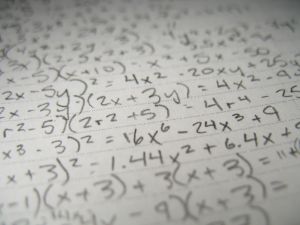
So much depends on place value. Without place value, a number is just a number. With it, a number can become hundreds or thousands.
In our numbering system, we usually begin with the numbers one to ten. These are fairly easy numbers for children to remember: after all, we have ten fingers (including thumbs!). We start by doing simple addition and subtraction. You have five apples, and you eat one. How many are left?
But soon, we need to work with larger quantities as well. Numbers range into the hundreds, the thousands, and even the hundreds of thousands. Add more zeros, and the possibilities are endless. These numbers can be hard to understand. They’re even harder to break into their component parts. Ask a child how many tens are in the number fifteen, and they may look at you like you’re a little crazy. After all, we start by visualizing numbers as ones. There are fifteen ONES in fifteen, mom!
When you’re teaching things like regrouping, it becomes really important to understand what numbers belong where. A 1 is no longer just a 1. Depending on where its place is, it could denote one 10, one 100, or one 1000.
This is where math blocks come in very handy. Using math blocks that you stick together in groups, children can see how a number like fifteen is made out of different number groupings. Take fifteen blocks out of the pile. Place them all into a group, and count them up. Now make them into a group of ten and a group of assorted blocks. How many groups of ten are there? How many “extra” blocks are there? You can do this with any number you wish, although you may run out of blocks.
To have children visualize what these larger numbers look like, have them draw ten of something on a piece of paper. Have them collect 100 of another object, such as buttons. Make a number wall. Place a piece of felt on the wall, and make three columns on the felt. At the top, write 100, 10 and 1. Now place the examples of these larger numbers above the columns, so that the children get a sense of the magnitude of that number. Finally, use felt numbers with velcro on them and place them in the columns. A 2 in the tens column and a 3 in the ones column makes the number twenty-three. Children can play with the numbers, moving them from place to place in the columns to see what happens.
How have you taught place value to your children?

